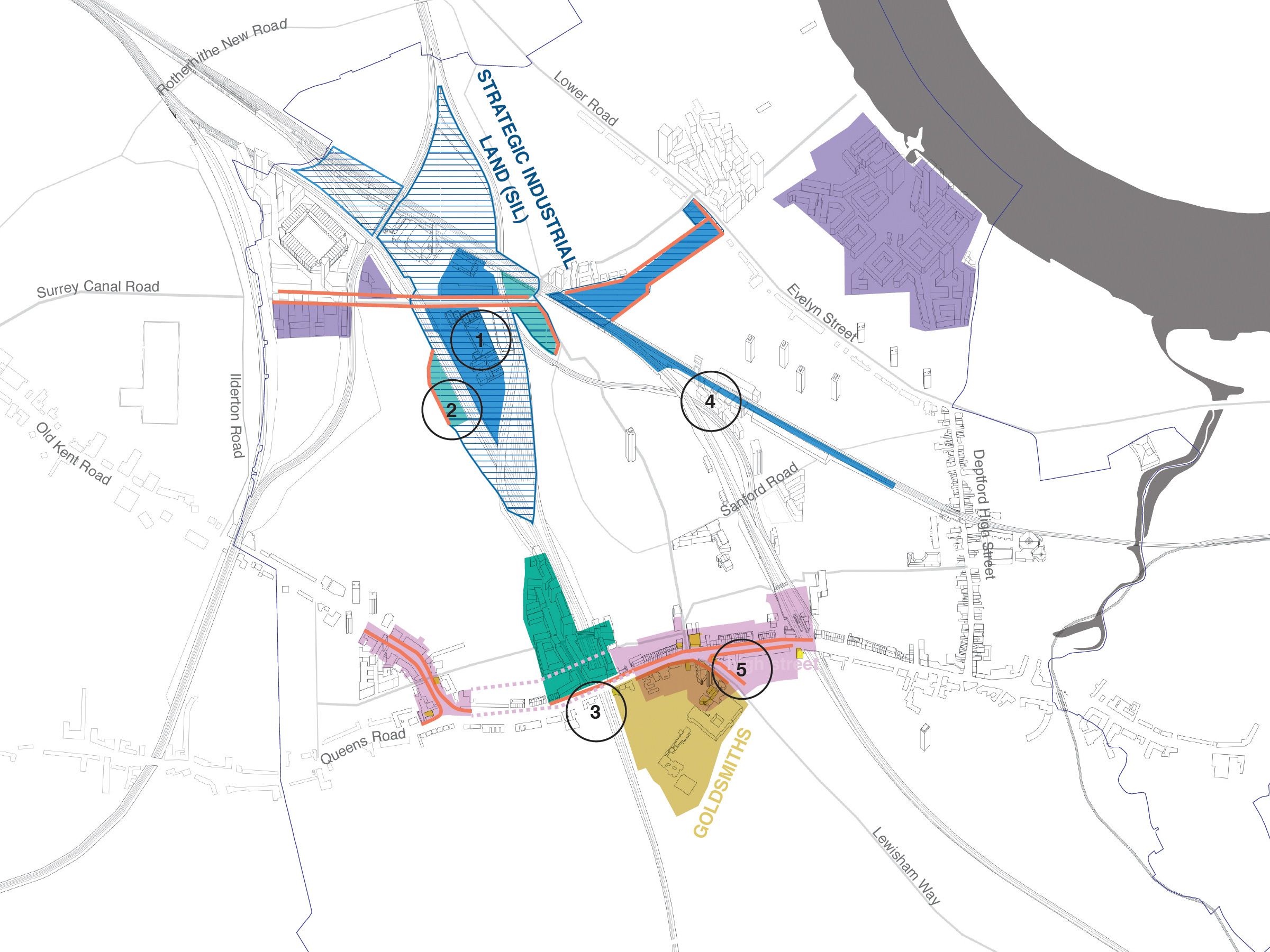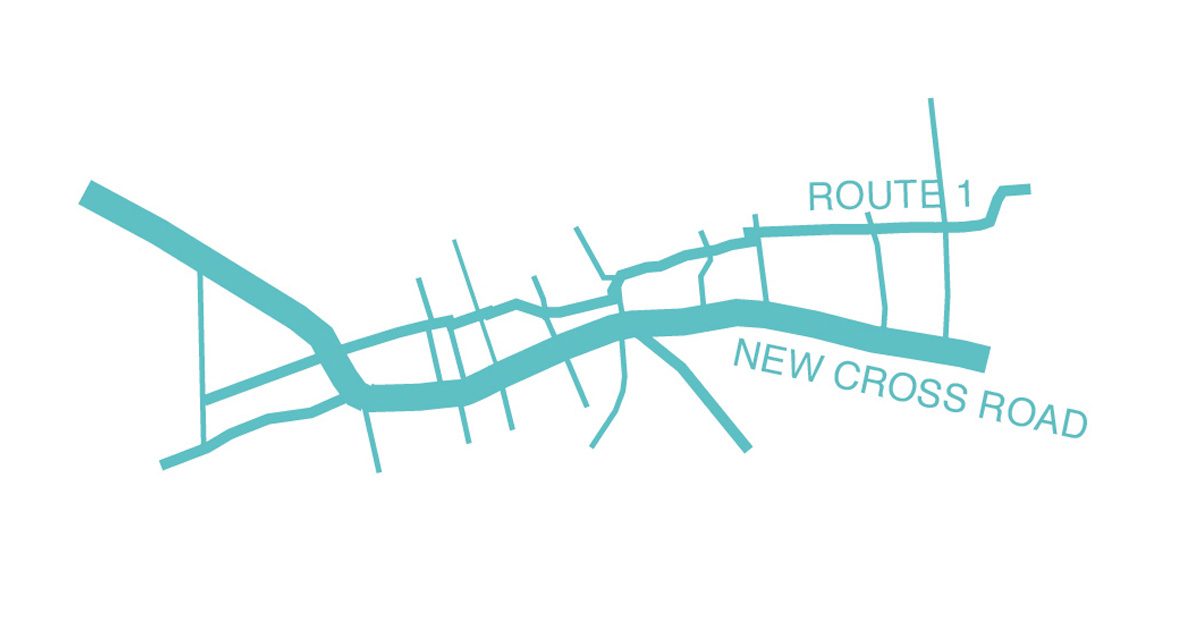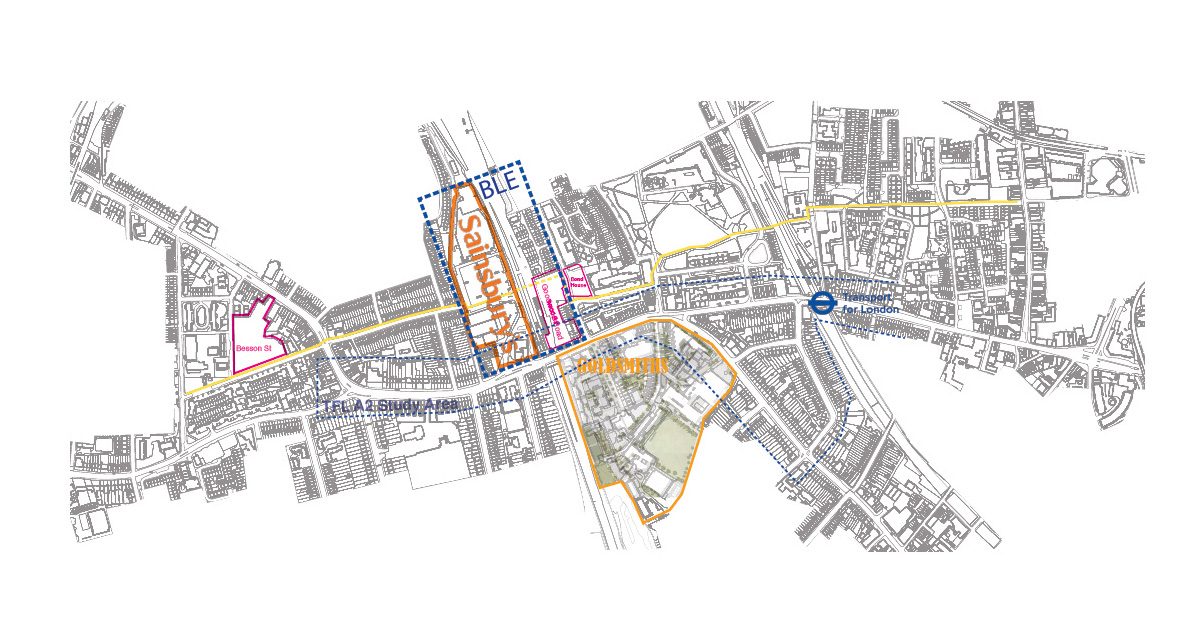New Cross is experiencing great change, its South London context being transformed by large scale redevelopment projects. This Area Framework, jointly commissioned by the London Borough of Lewisham, the Greater London Authority and Transport for London, aims to establish the key strategies to guide that change towards what the Mayor of London has termed ‘good growth’; transformation that acknowledges and works with the character of a particular place and its inhabitants, and that is physically and socially diverse.
The extension of the Bakerloo line has the potential to radically alter New Cross as a place to live, work and study. It could have a dramatic impact on patterns of movement across the area, while also creating a catalyst for changes to the physical and social environment experienced at street level.
This Area Framework establishes an evidence base that provides insight into the life of New Cross, its economy and built environment, and how that can be reinforced and improved. The study will be used by LB Lewisham, the GLA and TfL as they work with local communities to plan for the future of New Cross through projects like the LB Lewisham Local Plan, the Mayor’s London Plan, and the design of new Bakerloo line infrastructure. We have taken cues from how the area has evolved and developed in the past and considered how that understanding can inform future change. For example with over 350 artist studios discovered within the study area – demonstrating the huge influence of Goldsmiths, University of London – New Cross is one of London’s most creative zones, which must be acknowledged in forthcoming development plans.
The fundamental purpose of the Area Framework is to develop an aspirational and practical vision that maximises the benefit of infrastructure investment in terms of supporting Good Growth principles, through coordinating, negotiating and integrating the needs and desires of all those that have a stake in the future of New Cross.





















